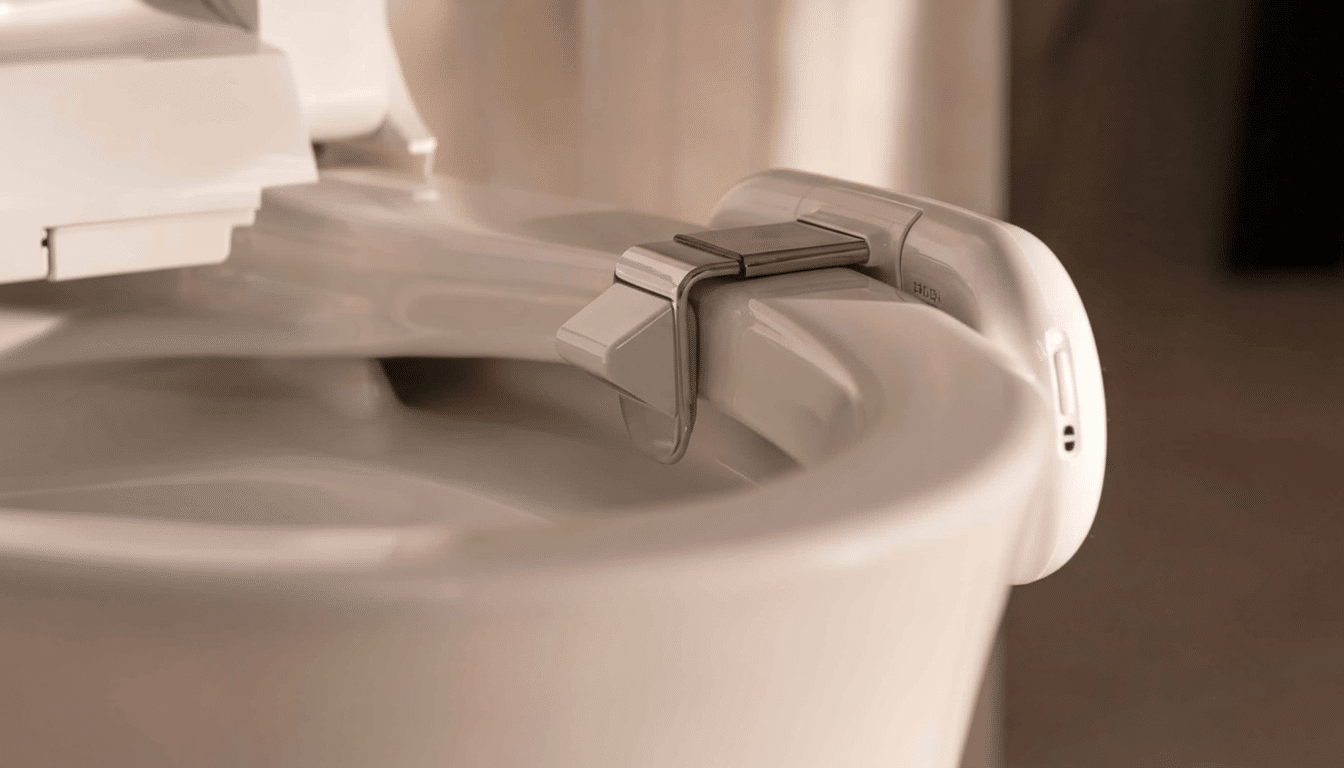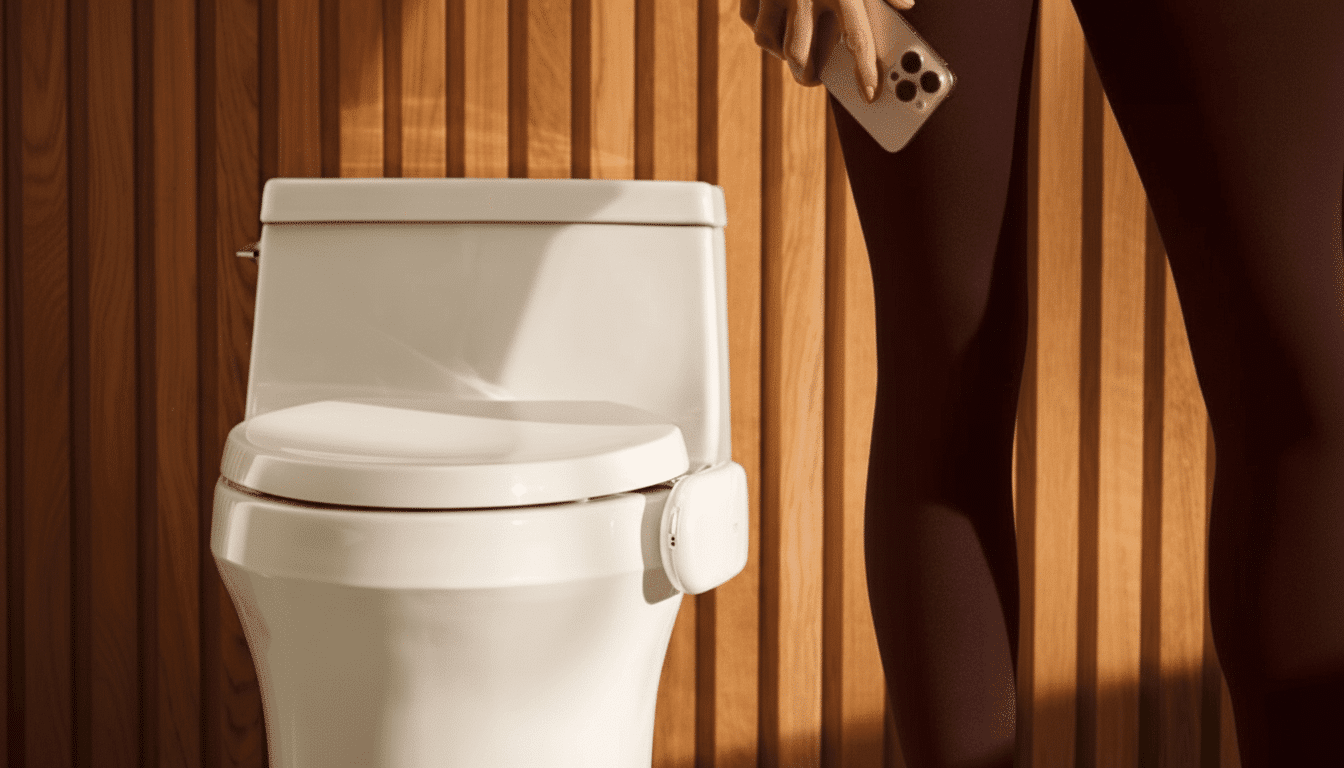Kohler is taking the smart bathroom into decidedly uncharted territory with Dekoda, a $599 clip-on camera that’s designed to stare into your toilet bowl and determine what it sees. The system uses imaging to provide insights about gut health and hydration, and can alert users when it may have found blood in water or stool, CNET reports. Hardware-wise, the features should sell themselves, and there are other selling points here, including a rechargeable battery, USB charging, and a built-in fingerprint sensor for multi-user identification; add in the software brains for roughly $70 to $156 via subscription.
What Kohler’s Dekoda toilet camera actually does
The Dekoda camera sticks to the rim and points down, taking images only of the bowl—Kohler notes that its sensors face away from users, and data used is protected with end-to-end encryption.
- What Kohler’s Dekoda toilet camera actually does
- Why a toilet-mounted camera for health monitoring exists
- Privacy and data security questions around Dekoda
- Is Dekoda a wellness gadget or a regulated medical device?
- Price, subscription costs, and how Dekoda compares to rivals
- What to watch next as Dekoda approaches consumer launch

The app also tags what it sees to return analysis reminiscent of digestion and hydration trends. It can also warn you if it spots red tones in waste, which could be an indication of blood and would act as a prompt to seek medical assistance rather than a diagnosis.
Household logistics matter here. The fingerprint sensor allows it to figure out who used the toilet, which is essential for accurate health tracking and analysis in homes with multiple users. The battery power means you don’t have to scavenge for an outlet, and the USB port allows for easy charging. The company hasn’t released technical details like sensor resolution or on-device processing capabilities, but those details are going to be vital for evaluating both accuracy and privacy.
Why a toilet-mounted camera for health monitoring exists
Feces and urine deliver a steady supply of “digital biomarkers,” no fingers pricked or wearables required. Doctors often use the Bristol Stool Form Scale to categorize consistency, which is correlated with how long stool spends in your gut, and can signal a range of problems from constipation to diarrhea. For individuals living with irritable bowel syndrome—which about 10% to 15% of adults in the United States grapple with, according to the International Foundation for Gastrointestinal Disorders—automated tracking could mean less guesswork and better care conversations.
The approach is not unprecedented. Withings’ U-Scan puts a urine lab in your toilet to track things like specific gravity and ketones in Europe, while eldercare-focused devices including the TrueLoo by Toi Labs have leveraged seat sensors to monitor bowel patterns. Start-up efforts like Throne have also tinkered with toilet-mounted imaging. Together, these products indicate that health monitoring is slowly flowing into the bathroom, not just on your wrist.
Privacy and data security questions around Dekoda
A camera in the toilet is certain to raise eyebrows, and Kohler’s promises will be subject to scrutiny. End-to-end encryption is table stakes, but buyers are going to want answers to questions like where images are processed (on-device vs. cloud), how long data is stored, whether raw images or only derived metrics get saved, and how users can delete everything. If data does get transferred, to a third-party service like that offered through a clinician portal, rules like the Federal Trade Commission’s Health Breach Notification Rule and state privacy laws apply.
It’s also worth mentioning that, here in the U.S., HIPAA usually does not apply to consumer health apps if data doesn’t flow through a covered entity such as a hospital or an insurance company. In other words, your protection isn’t like that of a doctor’s office. Clear-cut consent flows, affirmative opt-in sharing, and an independent audit would really go a long way to build trust for a product this intimate.

Is Dekoda a wellness gadget or a regulated medical device?
Whether Dekoda remains a wellness tracker, or if it crosses over into regulated territory, will be based on its claims. The Food and Drug Administration has developed clear guidelines for software that diagnoses or treats disease. If the system does nothing more than log patterns and remind users to talk with a clinician, it probably falls into the general wellness category. If it claims diagnostic accuracy—particularly for blood in stool, a test targeting colorectal cancer screening—then validation would be anticipated.
The stakes are not academic. The American Cancer Society cites more than 150,000 new cases of colorectal cancer in the U.S. a year, where screening practices emphasize established methods like fecal immunochemical tests and colonoscopy. A toilet camera could be an early nudge, but it shouldn’t replace proven screening. It’ll be useful findings and statistics that ultimately decide if Dekoda is a reliable crutch, or just a sideshow.
Price, subscription costs, and how Dekoda compares to rivals
At $599, plus a subscription fee, Dekoda costs more like a high-end health product than a bathroom accessory. In comparison, those smart toilets and bidets with brains at the upper end sell for thousands, and lab-in-the-bowl products like U-Scan have landed around the rough equivalent of €499 in Europe with ongoing plans. And the calculus for buyers, essential to adoption, is whether such insights will cut down on visits to a clinic, enhance the management of symptoms, or increase adherence to care plans enough that it’s worth it.
Pre-orders are being accepted, CNET said in a report, with service levels priced between $70 and $156. What those tiers unlock—long-term trend analysis, multi-user support (beyond the fingerprint sensor), or clinician-friendly exports—matters more to the perceived value than the camera hardware itself.
What to watch next as Dekoda approaches consumer launch
Three things prove that Dekoda breaks out: tech transparency, independent validation, and integrations. Publishing details on how data is flowing, what the algorithms are measuring, and how the models were trained can help build confidence. This would be past marketing claims and into third-party testing or pilots with gastroenterology clinics or research groups. And then if Dekoda does cleanly integrate into mainstream health records, or patient portals, then it could have a place in longitudinal care rather than as just a curiosity.
For now, the concept remains both provocative and practical: If we already turn to wearables for heart, sleep, and activity data, perhaps the bathroom will be the next—and most brutally honest—mirror of health. Whether consumers are willing to allow a camera into the bowl—no matter how private or encrypted—will be Dekoda’s first true test.

